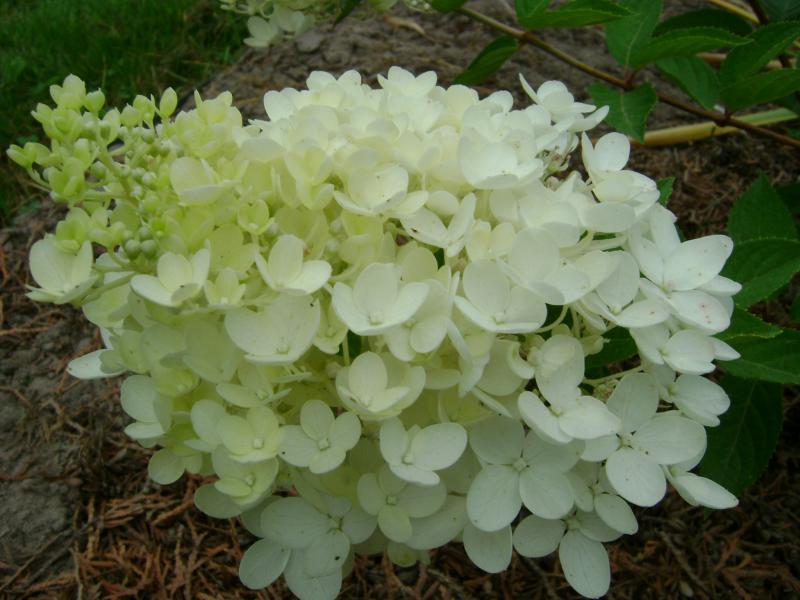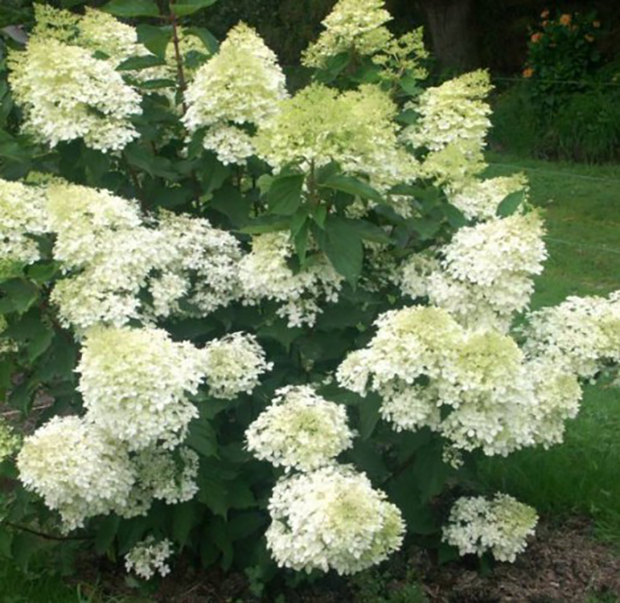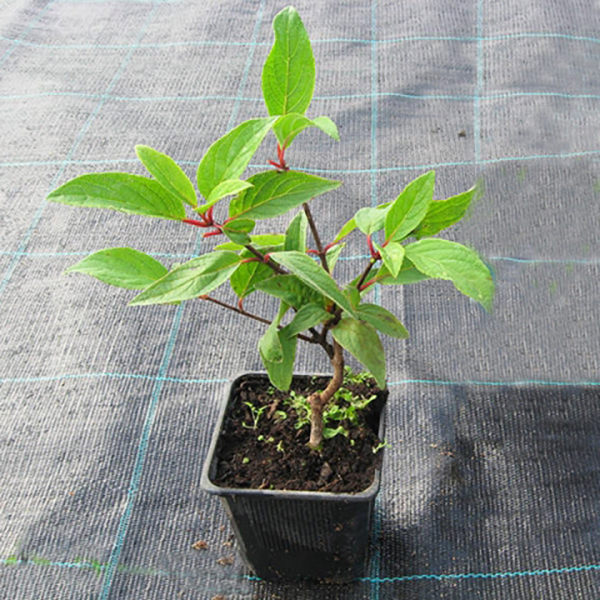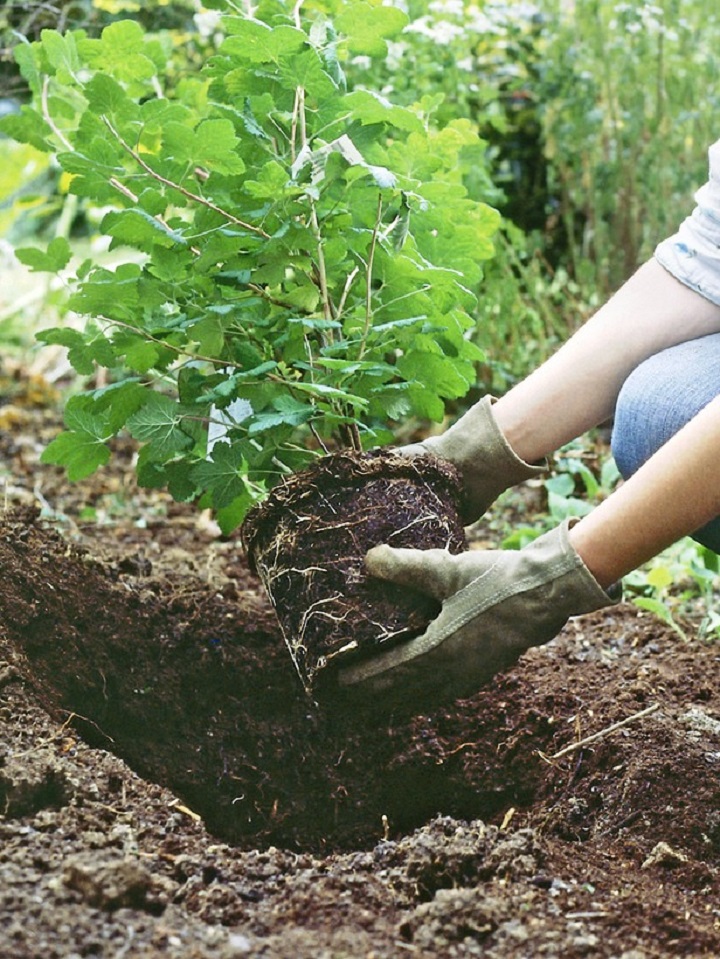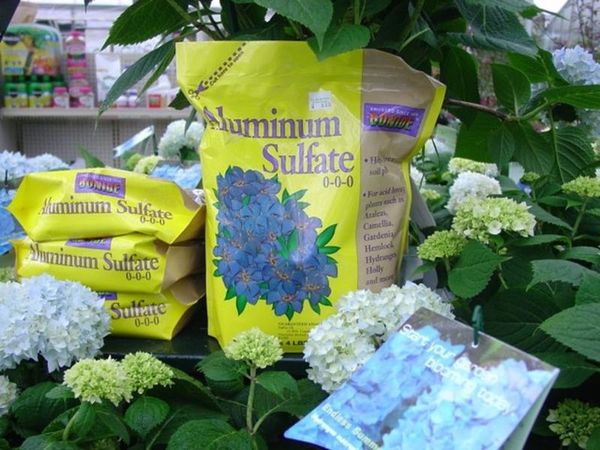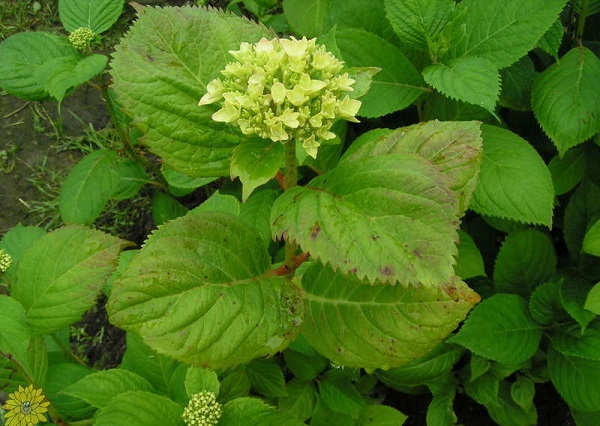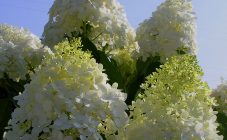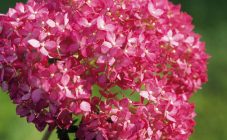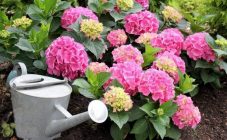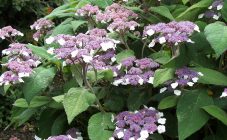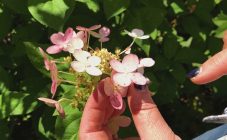Content:
The flower garden is the main decoration of the garden area. Some gardeners plant plants on the flower beds, blooming in turn - some have already faded on the flower bed, others are just producing buds, and the rest are building up the vegetative mass.
But many summer residents like it when the flowerbed is completely covered with flowers throughout the summer season. Hydrangea will be one of the suitable plants for them. A variety of varieties, a variety of petal colors, abundant flowering throughout summer and autumn - these are the main advantages of the plant. One of the most interesting varieties is Bombshell panicle hydrangea, whose continuous “explosive” profuse flowering gave its name to the variety.
Characteristic features of culture
Paniculate hydrangeas are most often grown by flower growers in their summer cottages; they can be found in parks and squares, where they are the main decoration of flower beds.
The main advantages of these perennial bushes are resistance to frost, a variety of varieties and varieties, undemanding care, abundant long flowering. If gardeners do not have the opportunity to work for a long time and regularly in their garden, it is the panicle hydrangea that will be the best choice.
Different types of these bushes can have different shoot heights, but most often in summer cottages, not too high varieties of panicle hydrangea are grown, which do not grow in height more than 1-1.5 m.
Perennial bushes have a beautiful rounded shape, and their rather long panicle inflorescences are about 20-25 cm long. Flowers are small (later fruits appear from them) and large. Different varieties of hydrangeas have a different combination of large and small flowers in the inflorescences, therefore the panicles-inflorescences have a varied appearance.
Characteristics and description of Bombshell hydrangea
Hydrangea Bombshell was recently bred - breeders from the Netherlands bred this variety for several years, and it passed state registration in 2010. The author of this variety is a breeder from Holland Alex Frederic Shoemaker.
In our country, the Bombshell hydrangea is not often found yet, since new varieties of any plants bred abroad do not immediately enter our country.
This shrub reaches a height of 0.8 m, and the diameter of the bush can reach 1-1.2 m. The foliage is oval, slightly elongated, rather large in size. Its color can vary depending on the soil on which the shrub is grown, from dark emerald to lighter shades.
During the flowering period, which lasts from the second decade of June until the first frost, the entire bush is covered with large inflorescences in the form of a wide pyramid. The height of such a "pyramid" can reach 14.5-15.5 cm, and its width - up to 11.5 cm. Panicles consist mainly of sterile flowers. The diameter of large flowers can reach 3-3.5 cm, the color of the petals after the opening of the buds can be cream or white with a greenish tint. By the end of flowering, the color becomes white with a pink tint.
The flowering of hydrangea paniculata Bombshell begins as early as the next season after planting the seedlings. But in order for this perennial to bloom profusely, certain rules for planting and further care should be observed.
Planting hydrangeas
To enjoy the beautiful bushes of this hydrangea, you first need to properly plant the Bombshell seedlings. To do this, you need to follow a certain order:
In order for the seedlings to acclimatize faster in a permanent place and quickly grow, it is better to plant them in the spring. Moreover, this should be done as early as climatic conditions allow. The variety has high winter hardiness, so seedlings can be planted in the fall. However, in this case, it is required that at least a month remains before the onset of cold weather - the bushes must have time to take root. Before the onset of cold weather, you should carefully cover them.
The landing site must be well lit by the sun, but not by its direct rays, protected from gusts of wind. It is better not to plant this perennial in the shade, otherwise the flowers will lose their rich color and will be too pale. And if the bushes are in a place where they are illuminated by the hot midday sun, they will dry out and die.
The diameter and depth of the planting pits should be about 0.7 m.The following components are poured into the pit:
- 2 parts of peat;
- 1 part sand;
- 1 part of humus;
- 2 parts of fertile soil.
Before planting, the shoots and roots of the seedlings are shortened a little, placed in the center of the pit, the roots are straightened along the diameter of the pit and covered with soil. The root collar should be just above the ground. At least a bucket of water is poured under each seedling.
Further care
Although this shrub is able to survive in any conditions - in a drought, next to a highway - hydrangeas still need some care for abundant flowering:
- regular watering;
- trimming;
- fertilization;
- protection from disease and pest attacks.
During the season, at least 4 hydrangea dressings are carried out. In the spring, organic fertilizers are applied under the bushes. Such feeding contributes to the active growth of the vegetative mass and the appearance of a large number of inflorescences. The next time the perennial should be fed during the budding period with a mixture of potassium salt, superphosphate and urea. In July, plants are fertilized with a solution of complex mineral fertilizer. The last time the bushes are fed with fertilizer containing phosphorus and potassium.
Plants should be watered regularly, making sure that the topsoil is always moist.
Diseases and pests, how to deal with them
This variety is resistant to major diseases, and it can get sick due to improper care or growing in a dark place.
- The appearance of chlorosis (yellowing of the leaf plates, while the veins do not change their color) is due to the fact that there is too little iron in the soil, and the soil is too alkaline. In this case, it is necessary to add a solution of ferrous sulfate under the plants.
- At the first manifestations of powdery mildew (spots on the foliage of ashy color with a bluish tint), the aboveground part of the shrubs is sprayed with Bordeaux liquid or Fundazol.
- In rainy, cool weather, brown spots may appear on the foliage - this is how gray rot begins. This disease can appear if plants are too thick or grow in shaded areas. The shrub should be urgently transplanted to a sunny place and begin to heal. For this, the vegetative mass is sprayed with a solution of Skor, Yundazol or Pure flowers.
- The fungal disease tracheomycosis affects the root system of a perennial.The aerial part quickly turns yellow, as the fungus spreads through the vascular tissues of the entire plant. Fight the disease with the help of fungicidal preparations, which should be diluted in accordance with the instructions for use.
Of the pests, this perennial shrub can be attacked by:
- nematodes;
- leaf beetles;
- snails;
- leaf rollers;
- aphid.
You can fight pests using folk methods or use insecticides.
The use of the variety in landscape design
In landscape design, hydrangea bushes are used both in single plantings and in groups. The best neighbors for this shrub are conifers and bushes. It is also good to combine Bombshell with astilba, hosts or cuff.
Snow-white bushes will refresh and refine any garden area, will look great in the park area.
